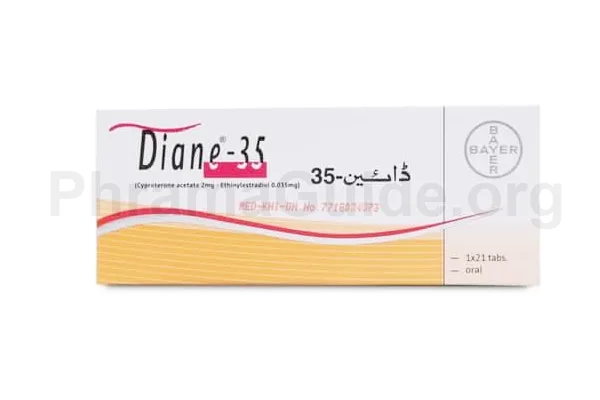Diane 35 is commonly used in birth control pills or for hormone therapy. Diane 35 is known to have several potential side effects, though not everyone experiences them. Here are some common and less common side effects associated with Diane 35.
Common Side Effects
- Nausea and Vomiting: Some individuals might experience nausea, particularly when starting Dian-35 or during the first few cycles.
- Breast Tenderness: Swelling, tenderness, or changes in breast size can occur due to hormonal changes.
- Headaches: Mild to moderate headaches or migraines might occur, especially during the initial phase of taking Diane 35.
- Changes in Menstrual Bleeding: Irregular bleeding or spotting between periods can occur, especially in the first few months of taking Diane 35.
- Mood Changes: Mood swings, depression, or changes in libido can sometimes be observed.
- Weight Changes: Some individuals might experience slight weight gain or changes in appetite.
- Skin Changes: Skin sensitivity, pigmentation changes, or acne might occur due to hormonal fluctuations.
- Fluid Retention: Mild fluid retention leading to bloating or swelling might occur in some cases associated with Diane 35.
- Changes in Sexual Function: This can include changes in libido or sexual performance.
- Changes in Blood Pressure: In some cases, there might be a slight increase in blood pressure.
Less Common Side Effects
- Vision Changes: Some individuals might experience changes in vision, such as blurring or discomfort when wearing contact lenses.
- Gastrointestinal Issues: Less frequently, individuals might experience abdominal pain, bloating, or discomfort while taking Diane 35.
- Gallbladder Issues: There is a rare possibility of developing gallstones or experiencing gallbladder-related complications with Dian 35.
- Skin Reactions: Allergic skin reactions like hives, itching, or rash may occur in rare cases associated with Diane 35.
- Chloasma: Dian-35 can cause chloasma, a condition characterized by the appearance of brown patches on the skin, especially on the face, may develop. This is more likely in individuals with a history of chloasma during pregnancy.
- Changes in Liver Function Tests: Some people may experience alterations in liver function tests, which can be detected through blood tests.
- Elevated Blood Sugar Levels: There’s a rare possibility of an increase in blood sugar levels, especially in individuals with a predisposition to diabetes.
- Breast Discharge: Rarely, a milky discharge from the nipples might occur, which should be evaluated by a healthcare provider.

What is Diane 35?
Diane 35 is one of the leading brands with a combination of Ethinylestradiol and Cyproterone Acetate, manufactured and marketed by Bayer Schering Pharma.
Diane 35 : Available Formulations and Strengths
Presently, Diane 35 is available in Tablet form with the following strengths.
Diane 35 Tablet : Ethinylestradiol 35mcg + Cyproterone (Acetate) 2mg strengths.
What Are The Possible Drug Interactions of Diane 35?
- Antibiotics: Certain antibiotics like rifampicin, rifabutin, and some types of penicillin can reduce the effectiveness of Diane 35.
- Anticonvulsants: Drugs used to treat seizures, such as phenytoin, carbamazepine, phenobarbital, and primidone, may reduce the Diane 35 effectiveness.
- Antiretrovirals: Some HIV medications like ritonavir and other protease inhibitors can interfere with the effectiveness of Diane 35.
- Some Hepatitis C Drugs: Ombitasvir/paritaprevir/ritonavir and dasabuvir used in treating hepatitis C can interact with Diane 35, potentially reducing their effectiveness.
- Cyclosporine: This medication used in immune system suppression after organ transplantation can interact with Diane 35.
- Warfarin: Ethinylestradiol can potentially increase the effects of blood thinners like warfarin, increasing the risk of bleeding complications.
- Hypoglycemic Agents: Diane 35 can affect blood sugar levels and might require adjustments in doses for individuals taking insulin or oral hypoglycemic agents.
- Corticosteroids: The combination of Diane 35 with corticosteroids can affect the metabolism of both drugs, requiring dose adjustments.
- Grapefruit Juice: Grapefruit juice might increase the levels of Diane 35 in the body, necessitating monitoring for potential side effects.
- Other Hormonal Medications: Using other hormonal medications concurrently with Diane 35 might require adjustments in dosages or careful monitoring for interactions.

Leave A Comment